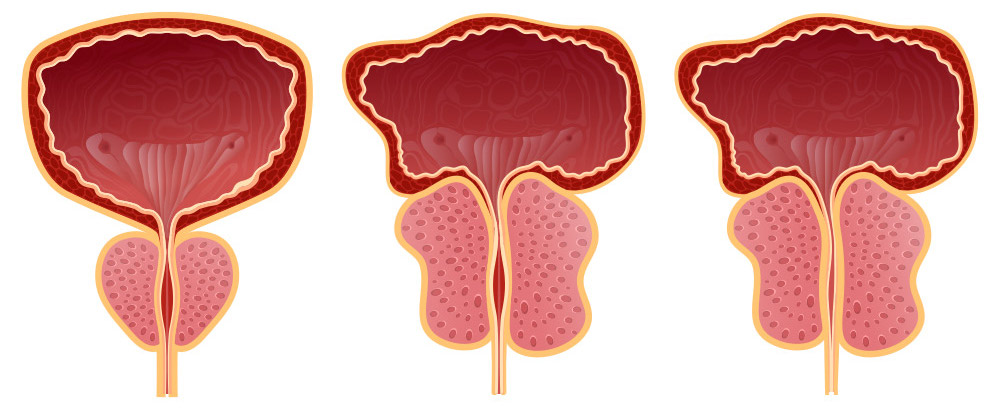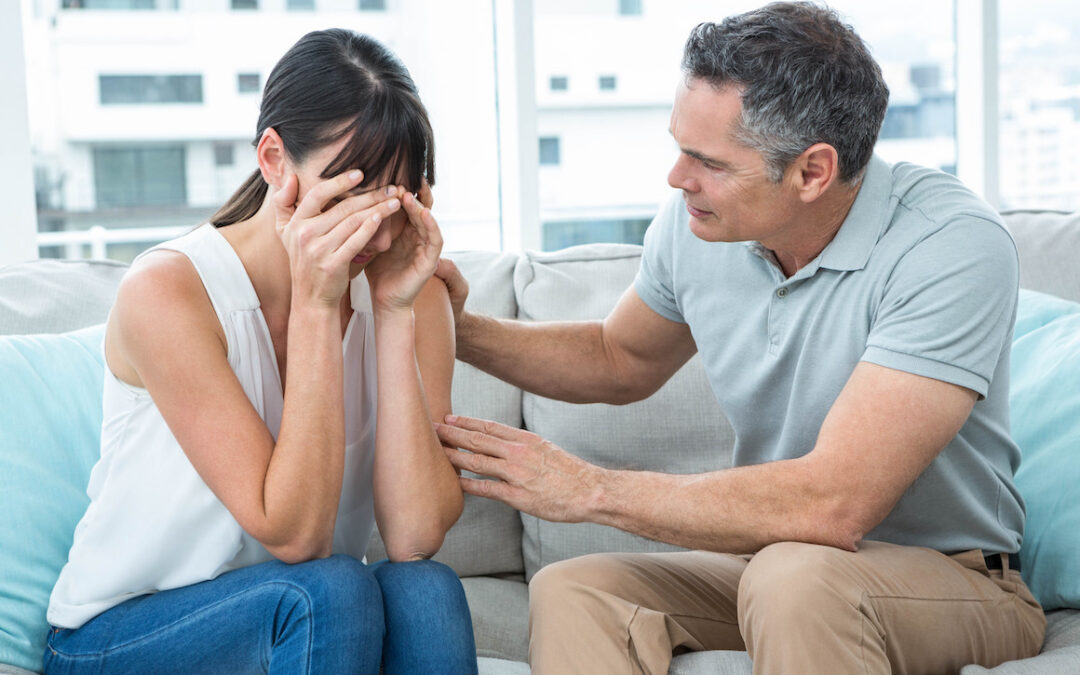What is the cause of prostate cancer (cell proliferation) – and what is the significance of the PSA level?
Enlargement of the prostate has precise biological causes, whereby an elevated PSA level usually leads to misdiagnosis. The frequently recommended biopsies (tissue removal), operations, radiotherapy or chemotherapy often cause irreversible damage.
Cell proliferation in prostate cancer is a special biological programme (BS) that triggers cell proliferation or compact tumours of the adeno-cell type in the conflict-active phase. In the conflict-active phase, when cell proliferation takes place, the PSA level is also elevated and insomnia, lack of appetite and weight loss often occur. The longer and more intensively the conflict is active, the more prostate tissue is built up (biologically sensible) and the higher the PSA level. The mental link ‘high PSA level = growth of malignant cancer cells’ is biological nonsense and has nothing to do with science.
What is the PSA level?
The abbreviation PSA stands for ‘prostate-specific antigen’. This antigen is a protein that is produced by the glandular cells of the prostate. It liquefies the semen and makes the sperm more mobile. PSA can be detected in large quantities in the seminal fluid – but also in the blood, where it has no function. If the prostate is well supplied with blood, small amounts of PSA are constantly released into the blood. Elevated PSA levels can be measured if the glandular tissue of the prostate is over-functioning or if cell proliferation is taking place. A high PSA level is not a sign of the growth of malignant and degenerated cells (i.e. not a mistake of nature, fate, nutritional error or genetic defect)!
During the healing phase, swelling processes and tissue degradation by mycobacteria lead to the typical symptoms, e.g. impaired urination. The glandular tissue of the prostate originates from the endoderm and is controlled by the brain stem. It produces the seminal fluid that transports the sperm cells (sperm). The fluid produced by the prostate is important for the motility of the sperm and therefore for their ability to fertilise.

Left: Normal prostate – Centre: Enlarged prostate – Right: Enlarged prostate with urination restrictions
The biological purpose of prostate cancer is to produce more secretions (seminal fluid) and therefore ejaculate in order to impress the ‘female’. More glandular tissue leads to more seminal fluid, so the cell proliferation of the prostate serves the biological goal of producing offspring or having better conditions for this.
The biological conflict is always an ugly, semi-genital conflict. This means that it is not directly about sexuality and the genital area, but about fertility in a figurative sense. The prostate conflict therefore differs from a purely sexual conflict.
Examples of typical prostate conflicts:
- The daughter sues the father for maintenance or premature surrender of the inheritance
- The only daughter has gone astray and/or is addicted to drugs
- The husband catches his wife/lover in flagrante delicto with a younger lover
- The divorce brings very ugly things to light
- The older man is left by the younger girlfriend for a younger man
Conflict-active phase (stress / sympathicotonia)
In the conflict-active phase, cell proliferation occurs and a compact tumour of the adeno-cell type grows. At the same time, mycobacteria (if present) multiply.
Conflict-resolved phase (fatigue, repair and healing phase)
In the conflict-resolved phase, the specific mycobacteria can break down the previously increased tissue (previous cell proliferation) with swelling and pus formation.
The stronger the conflict is felt, the faster the tumour grows. And the longer the conflict lasts, the larger the tumour becomes.
IIn the conflict-active phase, there is usually insomnia, loss of appetite, weight loss and thoughts revolve around the conflict or how it can be resolved. Pain or other complaints are rare. Only when the ‘tumour’ becomes larger can it press on the urethra and impair urination (delayed urine flow / weaker urine stream). If the conflict is resolved, then everything is exactly the opposite: the patient sleeps and eats again and gains weight.
Pain-free healing without the risk of impotence
Prostate cancer is painful neither in the Ca phase (conflict-active phase) nor in the Pcl phase (healing phase). In the repair and healing phase, the urine is smelly, cloudy (tuberculous), sometimes mixed with a little blood. The patient sweats at night and is very tired. He has a fever, often up to 40 degrees Celsius, but this is not a problem. The patient only needs to eat a good diet rich in protein.
If the urethra is compressed too much, an indwelling catheter can be inserted for 1–2 months until the tumour is removed and the obstruction to the outflow of urine is no longer present. After that, everything is fine again.
Prostate healing is harmless (possibly with a temporary permanent catheter) and – as long as the urine can flow out – not painful. This natural process cannot lead to impotence. If the prostate is treated by conventional medicine through the urethra by ‘gouging’, the risk of impotence is very high, as there is a high probability of injury and nerve damage. Constant recurrences and recurring processes of cell proliferation (tumour growth) and cell degradation (repair process) lead to more and more scar tissue in the long term. This is why the focus should be on resolving the biological conflict.
Mycobacteria help with healing
If no mycobacteria are present to break down the increased number of cells formed during the repair phase, urine flow will be impaired for as long as the swelling is present. Once the swelling has subsided, urine flow should return to normal. In around 5% of cases where there are no mycobacteria to break down the increased number of cells, surgery may have to be considered. This is a non-biological course, as the necessary mycobacteria (extensive antibiotic therapy) are/were not present. As this example makes clear, the mycobacteria are repair helpers and not enemies that need to be fought.


